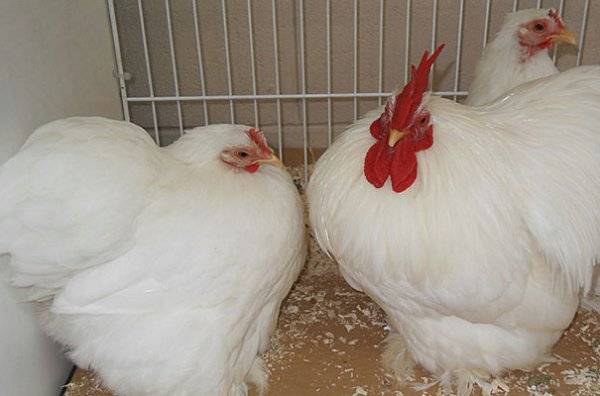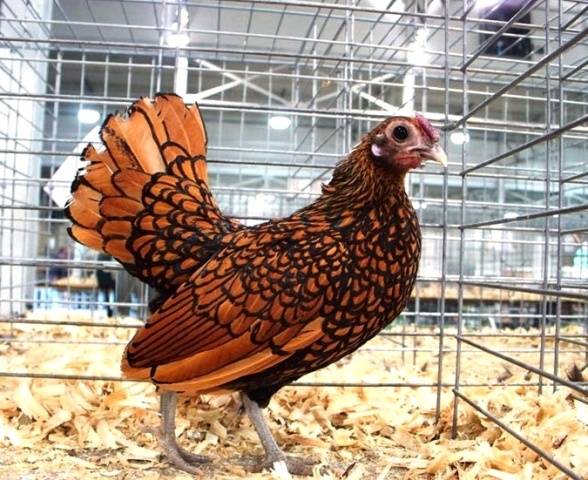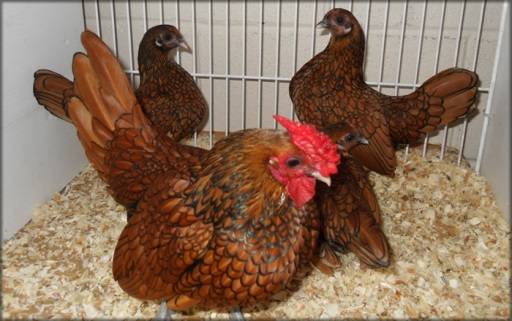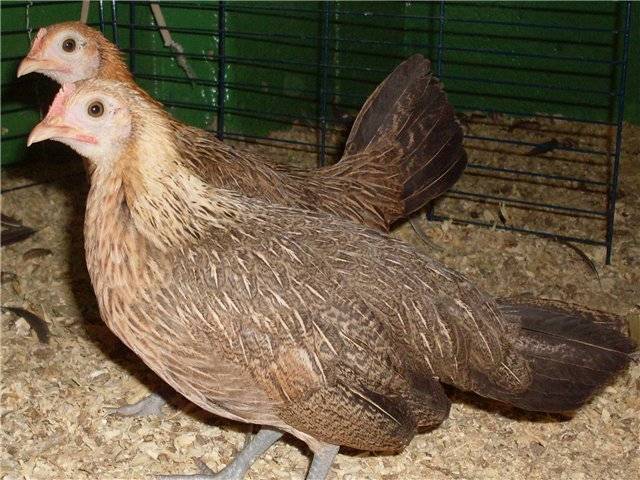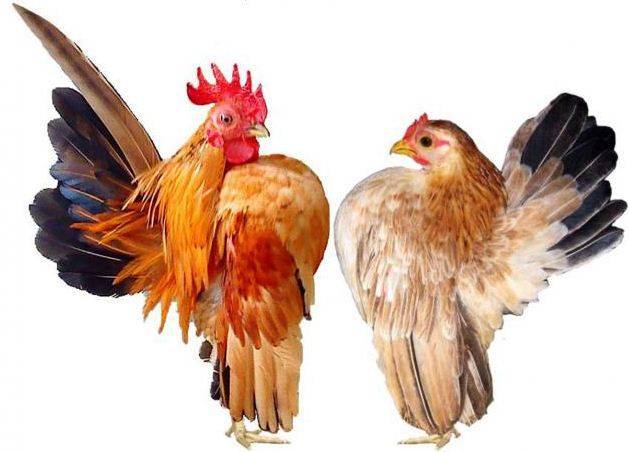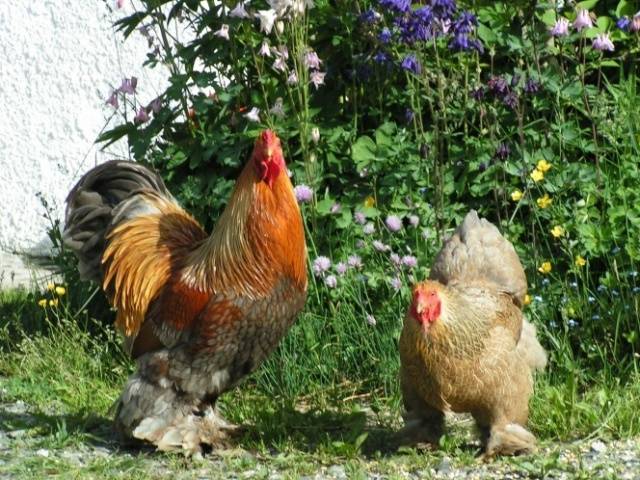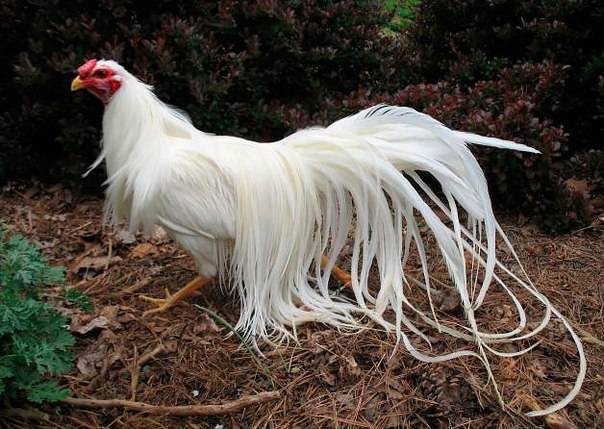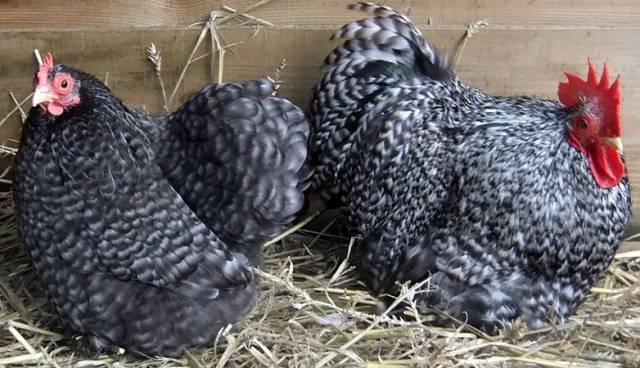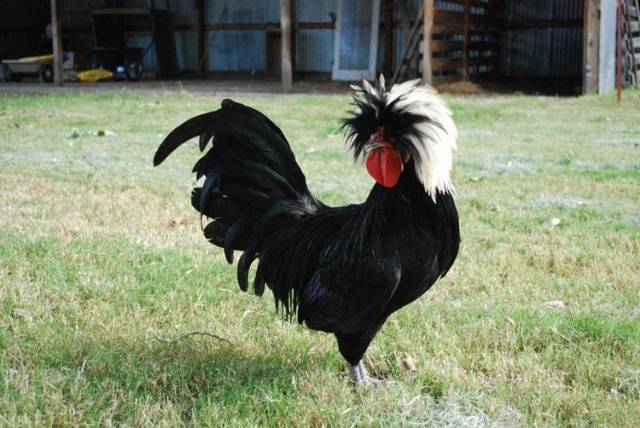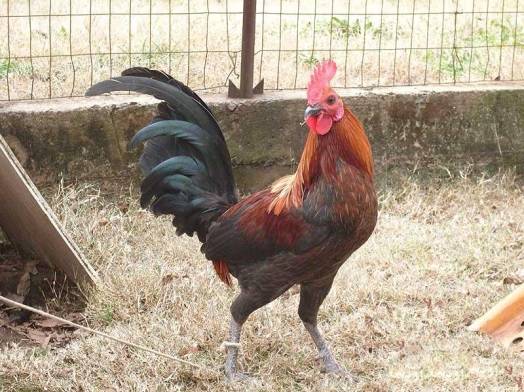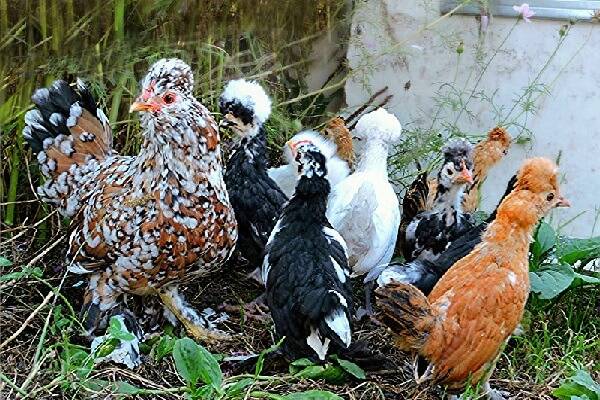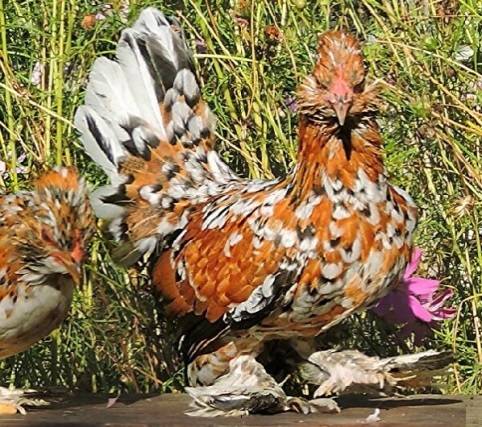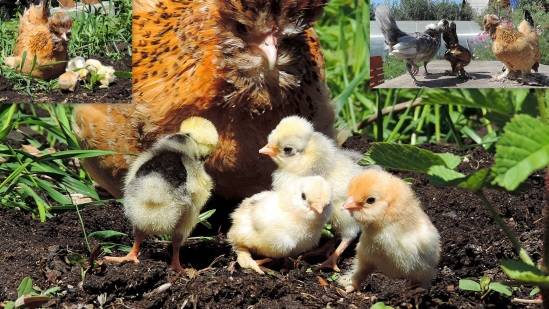Content
Real bantam chickens are those that do not have large counterparts. These are small chickens with a proportional body structure. Dwarf species of large chicken breeds usually have short legs. But the division today is very conditional. Bentams are called not only real miniature chickens, but also dwarf varieties bred from large breeds. Due to this confusion of the concepts of "dwarf chickens" and "bantamki" today the number of mini-chickens is practically equal to the number of large breeds. And all miniature chickens are called bentams.
In reality, it is believed that the real Bentam chicken is originally from Southeast Asia, but the exact country of origin of the breed is not even known. China, Indonesia and Japan claim the role of the "homeland" of little chickens. Considering that the size of the wild Banking hen, the ancestor of domesticated, is the same as that of the Bentam chickens, the likelihood of the origin of these decorative birds from Asia is very high.
But this only applies to real bantams, and even then not all. The rest of the breeds of dwarf "bantamoks" were bred already on the American and European continents from large productive chickens.
In the foreign classification, there is a third option when dividing these birds into groups. In addition to true and dwarf ones, there are also "developed" ones. These are miniature chickens that have never had a large analogue, but bred not in Asia, but in Europe and America. "True" and "developed" groups often overlap, creating confusion.
Real Bentham chickens are appreciated not only for their beautiful appearance, but also for their well-developed incubation instinct. Other people's eggs are often laid under them, and these hens diligently hatch them. Dwarf forms of large breeds with the incubation instinct are usually much worse and they are kept due to the fact that they need much less food and space than large counterparts.
Bantamok chicken breeds are divided into varieties:
- fighting;
- Nanking;
- Beijing;
- Japanese;
- black;
- white;
- chintz;
- nut;
- Sibright.
Some of them, walnut and calico, are bred in Russia by amateur privateers and in the Gene Pool of the Institute of Poultry in Sergiev Posad.
True
In fact, there are very few such chickens. These are mainly mini-chickens, called bantams and bred from large breeds. Such "bantams" attach great importance not only to appearance, but also to productive characteristics. From decorative true chickens, bantams do not require either eggs or meat.
Sibright
A breed of miniature chickens, bred in England at the beginning of the 19th century by Sir John Saunders Seabright. This is a true breed of bantam chickens, which has never had a large analogue. Sibright are famous for their beautiful two-tone plumage. Each monochromatic feather is outlined with a clear black stripe.
The main color can be any, therefore Sibright is distinguished by a wide variety of colors. There is also a "negative" color with a complete absence of black. In this case, the border at the edge of the feather is white and the bird looks faded.
Another distinguishing feature of Seabright is the absence of braids in the tail of the Seabright bantam roosters. Also, they lack the “stilettos” characteristic of roosters on the neck and lower back. The Sibright rooster differs from the chicken only in a larger pink-shaped comb. This is clearly seen below in the photo of chickens from the Sibright bentams.
The beaks and metatarsals of the Sibright are dark gray. A purple crest, lobes and earrings are highly desirable, but today these body parts are very often red or pink in Seabright.
The weight of Sibright roosters is slightly more than 0.6 kg.Chickens weigh 0.55 kg. In the description of these bantam chickens, the English standard pays great attention to the color of the birds, but does not pay attention to the productivity of these chickens at all. This is not surprising, since Seabright was originally bred as an ornamental chicken to decorate the yard.
Due to the fact that the main focus was on the beauty of the plumage, Sibright is not resistant to diseases and gives a small number of offspring. Because of this, the breed is dying out today.
Japanese
The main breed of Bentham mini-chickens, bred all over the world. Their second name is chintz according to the main color of birds of this breed. But the original name that came from the homeland is Shabo. In Russia, this breed of chickens was given the name Chintz Bantamka. This breed is very popular due to its very elegant coloration. At the same time, all sex differences remain in Shabo. In the photo of Calico bantams, you can easily distinguish a rooster from a chicken by the crests and tails.
The weight of females is 0.5 kg, for males 0.9. This breed hatches eggs well. Often, bantam chickens lead chickens of other breeds, which they hatched from laid eggs. Lack of Calico bantams as brood hens in too small a body area. They will not be able to hatch a large number of large eggs.
Bantams hatch their own chickens in the same quantities as large chickens. Usually, no more than 15 eggs are left under them, of which 10-12 chickens will hatch under natural conditions.
Nut
This branch is bred from Calico Bantams. From the point of view of decorativeness, the hens are rather nondescript. For the most part, they are used as hens for eggs from another bird. In addition to color, the description of this breed of bantamoks completely coincides with the description of Sitseva.
Malaysian serama
Bred by crossing Japanese chickens with wild chickens in Malaysia, this pigeon-sized bird has a very unusual appearance. The body of the serama is set almost vertically. The goiter is exaggeratedly protruding, the neck is bent like a swan. In this case, the tail is directed upward, and the wings are vertically downward.
Dwarf chickens
They differ from the large version only in smaller sizes. Indicators of egg production and meat yield are also important for them. But today, dwarf breeds are also increasingly beginning to start as decorative.
Brama
The photo shows that the "bantams" dwarf chickens of the Brahma look like an ordinary large version of this bird. Dwarf Brahmas have all the same colors as the large variants. In the description of this breed of chickens "bentamok" their high egg production is especially noted: 180-200 eggs in the first year of life. Dwarf Brahmas are calm and docile chickens, capable of becoming not only an egg producer, but also a garden decoration.
Yokohama
The Yokohama bentamka chicken breed comes from Japan, where it has a large analogue. Dwarf chickens were brought to Europe and "brought to breed" already in Germany. The photo shows that Yokohama bantam cockerels have very long tail braids and lanceolate feathers on the lower back. By weight, the roosters of this breed do not even reach 1 kg.
Beijing
Description and photo of the Peking breed of bentamok chickens completely coincides with the Chinese breed of large meat chickens, the Cochin Chin The Peking bentams are a miniature version of the Cochins. Like the Cochinchins, the color of the bantams can be black, white or variegated.
Dutch
Black bantams with a white tufted head. In the photo, the Dutch bantam chickens look attractive, while the description brings the fan down to earth. These are athletic fit birds with fairly good health.
Problems for these chickens arise from the tuft. A feather that is too long covers the birds' eyes. And in bad weather it gets wet and sticks together in a lump. If dirt gets on the feathers, they will stick together into a homogeneous solid mass.The same effect occurs when food residues stick to the tuft.
In winter, when wet, the feathers of the crest freeze. And to top off all the misfortunes with the tuft, even in good weather in summer, it can cause problems: in fights, chickens tear out the feathers on each other's head.
Fighting
Complete analogs of large fighting breeds, but much less weight. The weight of the males does not exceed 1 kg. As well as large cocks, they were bred for fights. The color of the plumage does not matter. There are as many varieties of fighting dwarf roosters as there are large analogues.
Old English
The true origin is unknown. It is believed that this is a miniature copy of the large English Fighting Chickens. When breeding, the color of the plumage was not given special attention and these mini-fighters can have any color. There is no consensus among breeders about which color is better.
Also, different sources indicate different weights of these birds. For some it is no more than 1 kg, for others up to 1.5 kg.
Russian breeds
In Russia, in the last century, breeders did not lag behind foreign colleagues and also bred breeds of miniature chickens. One of these breeds is the Altai Bantamka. From what breeds it was bred is unknown, but the population is still very heterogeneous. But some of these chickens resemble the Pavlovsk breed, like this Altai bantam in the photo.
Others are similar to Japanese calico bantams.
It is not excluded that these breeds participated in the breeding of the Altai breed. Pavlovsk chickens, as a primordially Russian breed, are quite frost-resistant and do not require insulated chicken coops. One of the goals of breeding the Russian version of mini-chickens was to create a decorative chicken that does not require special conditions from the owner. The Altai bentamka chicken breed is resistant to cold weather and easily adapts to various climatic conditions.
The Altai bantam cockerels are very similar in appearance to chickens. Like Sibright, they have no braids on the tail and lancets on the neck and lower back. The most common colors in this breed are calico and variegated. There are also Altai bantams of fawn and walnut colors. The plumage is very dense and lush. Feathers grow in tufts on the head and completely cover the metatarsus.
A chicken of this breed weighs only 0.5 kg. Roosters are almost 2 times larger and weigh 0.9 kg. Altai eggs lay up to 140 eggs, 44 g each.
Chickens
Whether a laying hen will become a good brood hen depends on the breed to which a particular representative of mini-chickens belongs. But in any case, the "assortment" of these birds in Russia is very scarce and amateurs are often forced to buy hatching eggs abroad.
Incubation is carried out in the same way as for eggs of large chickens. But the hatched chicks will be much smaller than their normal counterparts. For the initial feeding of the chicks, it is better to use starter feed for the quail, since the sizes of these chicks do not differ much.
You can also feed it in the traditional way with boiled millet and eggs, but remember that this feed sours very quickly.
Content
There are no fundamental differences in content. But you need to take into account the breed characteristics of the bird. For those who fly well, and there are most of them, for walking, an open-air cage with a height of at least 2.5 m is required for walking. Fighting cocks and Shabo, as they grow older, will have to be resettled from another bird in a separate room. These cockerels, with their small size, are characterized by a cocky disposition.
When keeping fur-legged chickens, you need to monitor the cleanliness of the litter so that the feathers on the legs do not get dirty or stick together. Crested need to equip a shelter from rain and snow and regularly check the condition of the feathers in the tuft.
Conclusion
The number of miniature chickens in Russia is very small. In most cases, only the Japanese version of Calico Bantams can be found in the yards, since they can be bought in the Gene Pool of the Poultry Institute.There are no reviews of bantams from Russian owners for the same reason. And it is difficult to separate information from foreign owners, since in the West there are a lot of different decorative chickens with very different characters. If mini-cochinchins are calm and peaceful, then fighting mini-chickens are always happy to start a fight.
